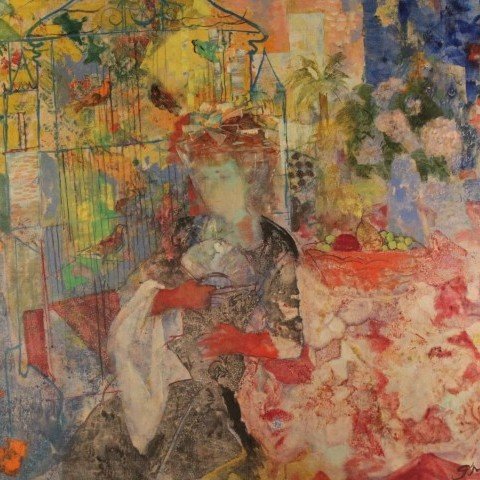A School of Paris painter who never abandoned lyrical figurative and landscape subjects, Emilio Grau-Sala was born in Barcelona and studied at the School of Fine Arts in his native town. Beginning his public career in 1929, he moved to Paris in 1932 and exhibited at the Salon du Printemps. His lively and graceful street scenes and interiors accorded well with current sensibilities in the Parisian art center, and Grau-Sala quickly gained an international reputation. In 1937, he was awarded a Carnegie prize in Pittsburgh. In addition to his work as a painter, Grau-Sala was also recognized as an important illustrator, decorator, and pastellist, illustrating numerous fine editions of volumes by authors such as Flaubert, Baudelaire, and Maupassant.
Leisure. Entertainment, and elegant domesticity are Grau Sala’s most frequently treated themes: people conversing at the racetrack, splendid parties, or mothers with children in well-appointed interiors. The present work is a classic example. A woman sits on a sunny terrace, fanning herself. Her refined black dress is accentuated with billowing white cuffs and a colorful bow and veil on her hat. Behind her stands a cage full of vibrantly colored birds, and, upon a patterned, red tablecloth, is a bowl of fresh fruit and vase of hydrangeas. Palm trees sway in the distance beyond the terrace. It is this love of carefree luxury that typifies Grau Sala’s work.

